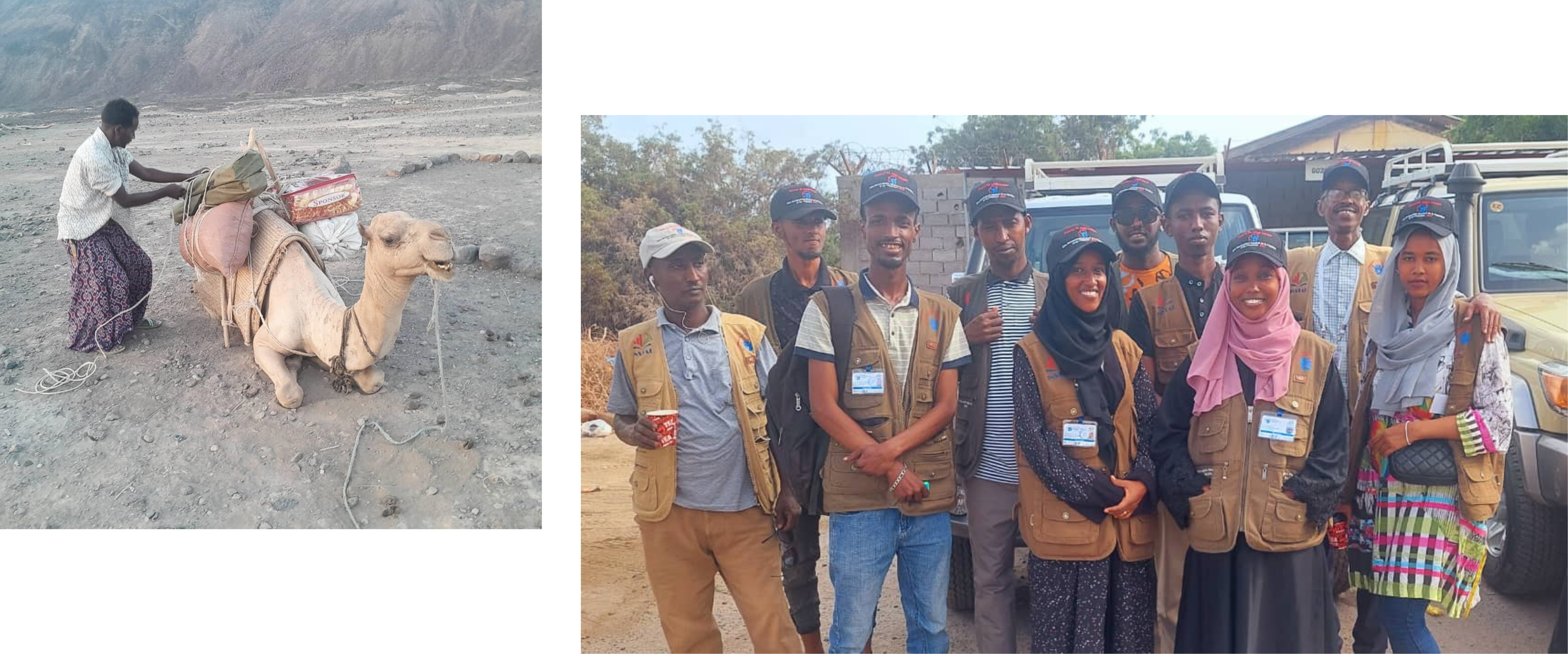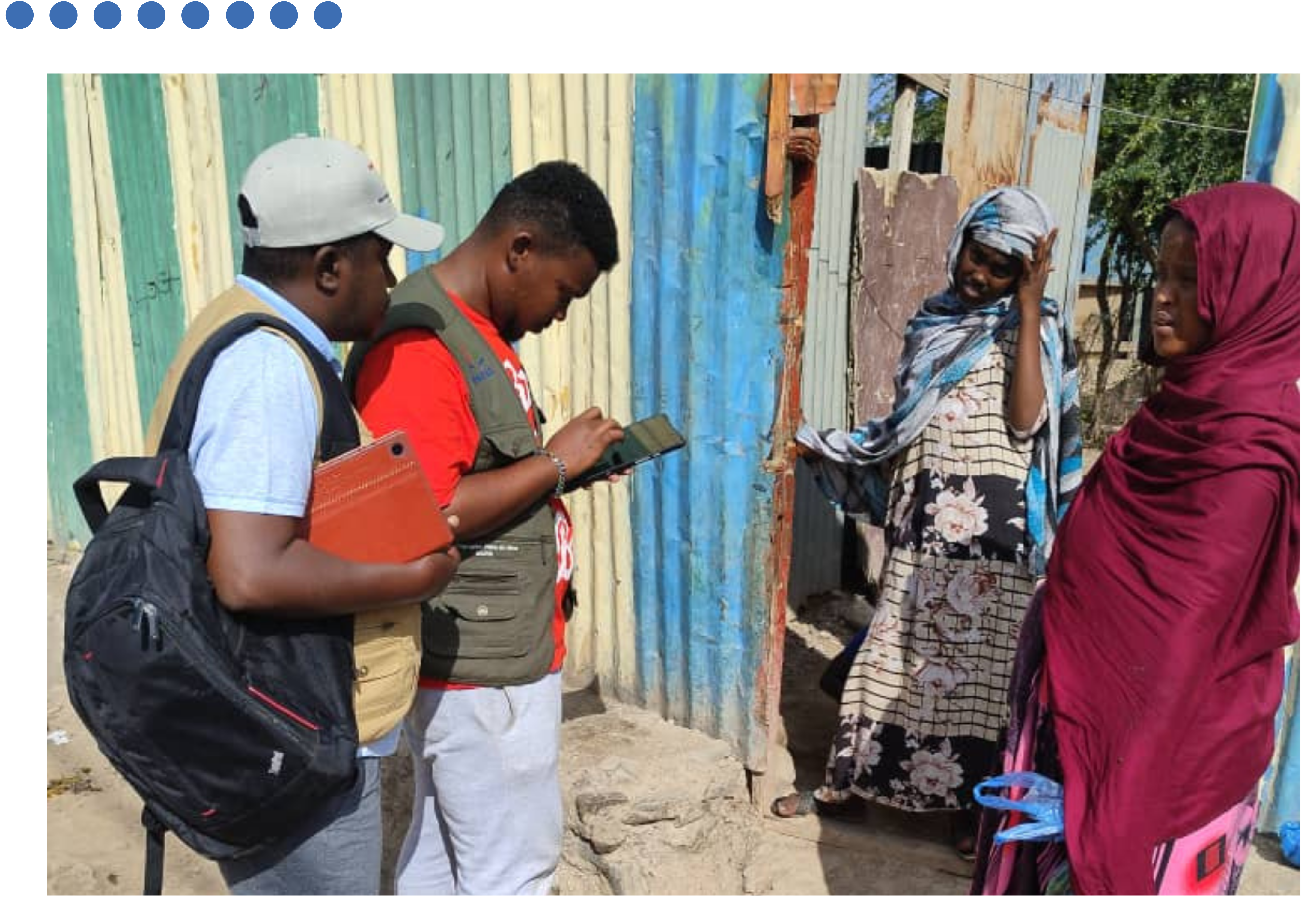Djibouti
Putting GRF pledges into action through including refugees and displaced persons in the 2024 Census
Background
Djibouti’s has long been a point of convergence for diverse populations fleeing conflict and persecution due to its location in the Horn of Africa. It hosts approximately 31,500 refugees and asylum seekers [1], mostly from conflict-affected neighbours Somalia, Ethiopia, and Yemen. Furthermore, the escalating impacts of climate change, such as prolonged droughts and desertification, have disrupted traditional livelihoods within the territory, causing internal displacement, as many abandon their lands and seek protection in urban centres.
The country has traditionally pursued refugee policies and, in 2017, made important strides with the adoption of the 2017–2022 Action Plan of the Comprehensive Refugee Response Framework (CRRF) and the implementation of a new Refugee Law In addition to four initial commitments made at the Global Refugee Forum (GRF) in 2019, the inclusion of refugees in the 2024 national census was one of two new commitments made by the government at the second GRF in 2023.

The 3rd Population and Housing Census
Djibouti’s National Institute of Statistics (INSTAD) carried out in 2024 the 3rd edition of the General Population and Housing Census (RGPH-3), under the supervision of the Ministry of Economy and Finance. Funded by the World Bank, the RGPH-3 was originally planned for 2019 but was delayed by the COVID crisis. It is the third census conducted in Djibouti since its independence, following the first and second editions in 1984 and 2009. After the pandemic, planning resumed in 2021, with the organization of various consultative meetings with national stakeholders on the census topics. A Technical Committee was set up with members from different institutions that are also part of the country’s broader Committee for Statistical Programming and Methodologies (CPSM).
During 2022 and 2023, questionnaire design, mapping, pilot tests and necessary corrections were carried out. To ensure accurate data collection, enumerators received extensive training. More than 1,550 agents were mobilized to conduct the population count covering all households in May-June 2024 using two main questionnaires: one for regular households and the collective household and homelessness questionnaire. For the latter, enumerators recorded the name of the locality or neighbourhood where the homeless person was encountered, along with the GPS coordination — data collection for homeless individuals often occurred during nighttime hours.
The RGPH-3, presented an important opportunity to improve available data on forcibly displaced populations. With input and guidance from the Ministry of Interior’s Office National d’Assistance aux Réfugiés et Sinistrés (ONARS, National Office for Assistance to Refugees and Disaster Victims) and the United Nations Refugee Agency (UNHCR), questions were included on nationalities, country of origin/birth, possession of official identification documentation, place(s) of previous residence, reasons for moving, and refugee/asylum-seeker registration. Whilst the main questionnaire was used in the refugee villages of Hol-Holl and Ali Addeh, a collective household questionnaire was applied in the Markazi refugee camp.
Currently, INSTAD is working on the tabulation of data and expects to publish during 2025 the results in 24 thematic reports, including one on refugees.

The RGPH-3 was originally planned for 2019 but was delayed by the COVID crisis | ©INSTAD
The use of the International Recommendations
Technical support from EGRISS also played a crucial role in refining the census form and ensuring alignment with international best practices. The inclusion of questions to identify refugee, IDP, and stateless populations in national census instruments is a key recommendation from each of the IRRS, the IRIS, and the IROSS. Together, the trilogy was a useful resource for INSTAD and partners to draw from. They guided the formulation and placement of questions to identify refugees, asylum-seekers, IDPs, and populations who may potentially be stateless.
The inclusion of questions related to internal displacement proved particularly valuable as official statistics did not previously cover this group. By asking about past residence and reasons for migration, the census revealed a significant number of people internally displaced due to factors such as drought. Similarly, using the IROSS, the RGPH-3 can produce estimates of those who may be stateless or of unrecognised nationality status. The questionnaire included options for individuals without any official documents, such as birth certificates or identity cards, which are crucial for establishing nationality, and captured individuals whose nationality could not be definitively determined. It further allowed individuals to self-identify as stateless if they believed they belonged to this category.
“The census was our opportunity to capture as much as possible and we were very fortunate to learn about EGRISS and the international recommendations. So, we reached out to EGRISS, and we got very useful input. Even when we did the pilot, we saw how important the IRIS and the IRRS were.”
— Omar Ali, Director of Demographic and Social Statistics, INSTAD

Conclusion
Djibouti’s 2024 census marks a significant stride in the country’s efforts to improve the inclusion and protection of refugees and displaced populations, in line with its commitments at the GRF. This initiative’s success owes much to INSTAD’s leadership and fruitful multi-stakeholder collaboration. Such a proactive approach, guided by international best practices and informed by the EGRISS Recommendations, represents a crucial step forward. Beyond the direct impact of census results on public policy , the census data will also inform the sampling frame of the upcoming 2025 Household Living Conditions Survey. Together these data processes will enable the production of disaggregated data on refugees for the 14 prioritised SDG indicators.
The RGPH-3 was designed with a long-term vision: to serve as a foundation for improving the accuracy and consistency of administrative data across Djibouti’s government institutions. Work has already started to create a harmonized approach to data collection across different sectors, such as education, health, and labour, building on the RGPH-3 instruments, leading to more reliable and comparable data on refugees and displaced populations.
[1] UNHCR Country Overview: See here.
